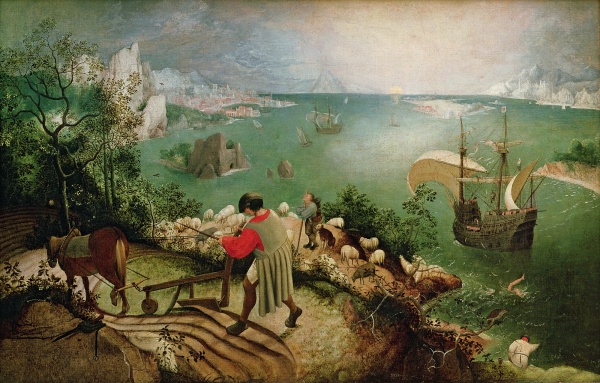Facts About Landscape with the Fall of Icarus
The painting "Landscape with the Fall of Icarus" is housed at the Royal Museums of Fine Arts of Belgium in Brussels. Initially attributed to Pieter Bruegel the Elder, closer examination in 1996 cast doubt on its true origin. Experts now believe it is likely a copy created by an unknown artist, based on Bruegel’s lost original from the 1560s.
This artwork illustrates the story of Icarus from Greek mythology, who fell into the sea after flying too close to the sun with wings fashioned by his father, Daedalus. In the painting, a ship, a ploughman, a shepherd, and an angler can be seen, all seemingly oblivious to Icarus’s tragic descent. The piece poignantly comments on human indifference to suffering, foregrounding everyday people in a scene where mythological figures typically dominate.
The painting's authenticity has been a subject of debate. Some experts question it due to its quality and because it is on canvas rather than a wooden panel, which was more common during that period. Scientific tests, including radiocarbon dating and paint analysis, have been employed to investigate its origins. Recent findings suggest it may have originally been a panel painting that was later transferred to canvas.
"Landscape with the Fall of Icarus" has inspired various forms of media. Poets like W. H. Auden and William Carlos Williams have written about it, and it has appeared in Nicolas Roeg's film "The Man Who Fell to Earth" and Eric Steele's documentary "The Bridge." The painting’s depiction of Icarus’s unnoticed fall serves as a poignant reminder of the unnoticed tragedies occurring in a world too preoccupied with its own affairs.

 Luxembourg
Luxembourg